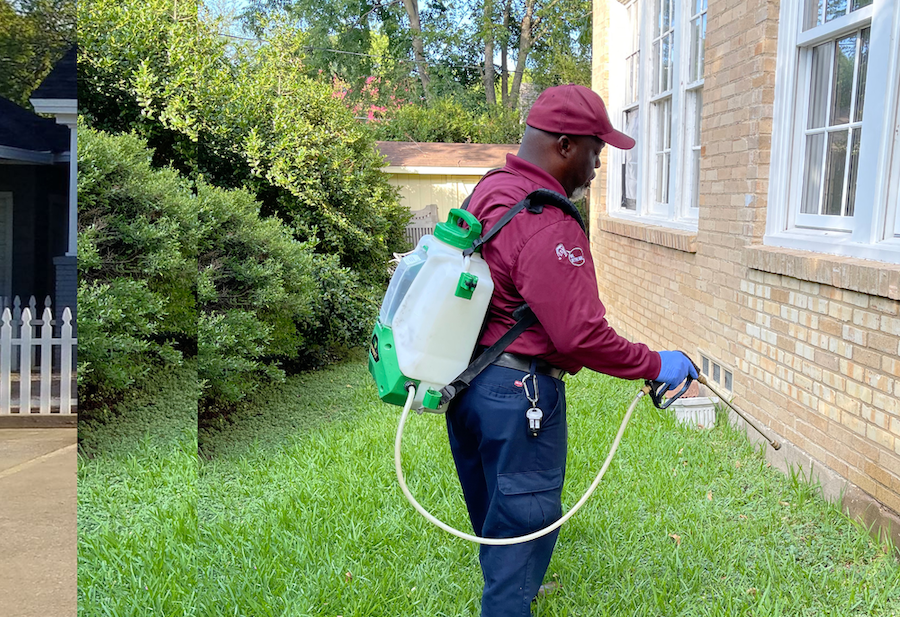A1 Charlotte Pest Control Companies - Your Regional Pest Professionals
Wiki Article
Bed Bug Therapy Failure: Contrasting Chemical Vs. Non-Chemical Solutions
In the realm of parasite control, particularly when dealing with the persistent concern of bed bugs, the selection between chemical and non-chemical therapy remedies can be an essential one. Both techniques offer unique advantages and downsides, influencing variables such as efficiency, security factors to consider, and overall cost. By analyzing the nuanced information of each technique, a more clear understanding of which course to seek in dealing with a bed pest invasion can be attained.Efficiency of Chemical Therapies
Chemical treatments for bed pest problems have been commonly acknowledged for their powerful and quick efficiency in getting rid of these insects. When considering the effectiveness of chemical treatments, it is vital to understand that they can offer a fast and comprehensive remedy to a bed pest issue.Moreover, chemical treatments have the benefit of providing residual results, meaning that they can remain to remove bed pests also after the preliminary application. This residual activity is particularly helpful in combating any potential re-infestations. In addition, the rapid action of chemical treatments can bring relief to people encountering severe bed pest infestations, permitting them to reclaim control of their home rapidly.
Safety And Security Issues With Chemical Solutions
One essential element that requires cautious factor to consider when using chemical services for bed bug treatment is making certain the safety of occupants and the setting. While chemical therapies can be reliable in removing bed insects, they might position risks if not managed appropriately. Among the primary safety and security worry about chemical solutions is the possible injury they can trigger to human wellness. Exposure to certain chemicals utilized in bed insect therapies can bring about breathing concerns, skin inflammation, or other adverse responses, particularly in people with pre-existing conditions or sensitivities. Additionally, improper application or dose of chemical pesticides can lead to harmful deposits remaining in the treated area, presenting lasting wellness risks to occupants.Moreover, the ecological influence of chemical services is another significant factor to consider. Some chemicals used in bed bug treatments might be damaging to beneficial bugs, wild animals, and ecosystems if they leach into the dirt or water supply. It is necessary to utilize chemical treatments carefully, following security guidelines, and thinking about less hazardous options to mitigate these dangers and make certain the reliable and safe administration of bed insect infestations.
Advantages of Non-Chemical Approaches
Thinking about the possible security concerns and environmental impact associated with chemical solutions for bed insect treatment, discovering non-chemical methods presents an appealing alternative with numerous distinct advantages. Non-chemical therapies are environmentally friendly, as they do not add to air or water air pollution, making them a lasting choice for parasite control.Additionally, non-chemical options can be reliable in targeting bed insects, including hard-to-reach areas where chemical therapies may not permeate - A1 pest control services charlotte. Techniques such as warmth therapy, vacuuming, heavy steam cleansing, and cushion coverings supply thorough eradication without the use of dangerous chemicals.
Limitations of Non-Chemical Treatments

In addition, non-chemical therapies typically require numerous applications to accomplish successful removal. This can be time-consuming and may not constantly assure complete elimination of all bed pests and their eggs, especially in hard-to-reach or concealed places.
Furthermore, the success of non-chemical therapies heavily counts on appropriate implementation and thoroughness, which can be testing for individuals without specialist proficiency. Poor application of non-chemical techniques may cause incomplete eradication, bring about relentless invasions and the requirement for extra treatments.
Therefore, while non-chemical therapies have their benefits, it is necessary to recognize these constraints and consider them when determining one of the most effective strategy for taking care of bed pest invasions.
Price Contrast: Chemical Vs. Non-Chemical Options
Provided the limitations linked with non-chemical therapies, an essential facet to review in the context of bed pest monitoring is the expense contrast between chemical and non-chemical choices. In contrast, non-chemical treatments like warm treatment or vapor can be more pricey, with prices ranging from $1,000 to $6,000 for a whole home. While the preliminary expense of chemical therapies may seem lower, multiple treatments may be needed to completely eliminate the invasion, potentially enhancing the general expense.Conclusion

Considering the potential safety problems and environmental impact linked with chemical options for bed bug therapy, exploring non-chemical strategies provides a promising choice with a number of distinct advantages.Offered the constraints linked with non-chemical therapies, an important element to review in the context of bed pest management is the cost comparison between chemical and non-chemical options. In comparison, non-chemical treatments like warmth therapy or steam can be extra costly, with expenses ranging from $1,000 to $6,000 for an entire home. While the initial cost of chemical therapies may appear reduced, several treatments might be needed to completely eliminate the invasion, potentially raising the overall price.In verdict, when contrasting chemical and non-chemical bed insect treatment options, it is vital to think about performance, security, benefits, limitations, and expense.
Report this wiki page